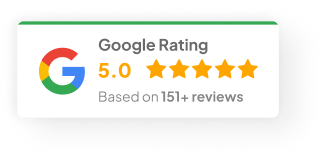24 Sep 25
Is AI Content Generation a Threat to Creativity? Exploring the Pros and Cons
AI has been the hot topic for a while now. Everywhere you look, writing, design, music, marketing, people are asking the same thing. Is this stuff helping us be more creative? Or is it quietly replacing the spark that makes creative work actually human?
Truth is, it’s not black and white. There are real upsides. And there are risks that can’t be ignored.
What AI Content Generation Really Means
When people throw around the term “AI content generation,” they usually mean the use of generative AI or large language models. Tools trained on massive piles of data. They can spit out a blog post, draft ad copy, even whip up an illustration or a music track in seconds.
It’s efficient, no doubt. But that’s also where the debate heats up: does efficiency come at the expense of originality?
Where AI Works in Creativity
1) Helps with blocks
Everyone hits that wall. Blank page, empty canvas, nothing coming. AI can throw out a headline, a style, a rough sketch. Zipdo reported that 60% of designers say AI helps with ideas and inspiration. For many, it’s more like a creative jumpstart than a replacement.
2) Saves time
A lot of the grunt work, formatting, edits and early drafts, can be pushed to AI. For freelancers or smaller teams, that’s the difference between staying afloat and burning out.
3) Levels the field
Not everyone can hire a pro designer or copywriter. AI gives students, small businesses, or solo entrepreneurs tools to make something decent without spending big. A report pointed out how independent creators lean on AI to produce client content they couldn’t otherwise deliver. That means more people get to take part in the creative economy.
4) Adds fresh possibilities
AI doesn’t just copy; it sometimes spits out strange, unexpected mixes. Research showed AI-generated ideas often scored at human-level creativity. Reviewers couldn’t always tell the difference. That’s proof it’s not just mimicry; sometimes it sparks something genuinely new.
Where AI Hurts Creativity
1) Skills can slip
Rely too much on AI, and those muscles for problem-solving or original thinking don’t get exercised. Pew Research found 53% of U.S. adults believe AI will actually reduce creativity. Only 16% think it’ll make things better. That shows how worried people are about a slide toward cookie-cutter output.
2) Job loss fears
Here’s the blunt reality: AI is cheaper. That is why many professionals in creative industries worry about job displacement. Many illustrators, copywriters, and video editors have already lost work to AI-generated alternatives. Lower costs for companies can mean fewer opportunities for human talent.
3) The ownership mess
Most AI models are trained on copyrighted work pulled from the internet. Artists don’t consent, and they don’t get compensated. ArXiv (2024) highlighted that most creators want transparency about what data is used and fairer systems for payback. Until then, it feels like borrowing without asking.
4) Lack of authenticity
A survey from Insight Trends World states 70% of people are uncomfortable with fully AI-made content. Even with AI-assisted work, 54% still felt uneasy. The reason? Human touch matters. Audiences can sense when a piece has lived experience or emotion behind it. AI just doesn’t carry that same weight.
5) Bias and bad use
AI reflects the data it’s trained on. That means it can spit out biased, stereotypical, or even harmful material. Add in risks like plagiarism or deepfakes, and you see why trust is a big issue.
Finding Some Middle Ground
AI doesn’t have to kill creativity. It depends on how it’s managed. A few things already being talked about in creative circles:
- Transparency on when AI is used.
- Updating copyright frameworks.
- Training creators so they know how to keep their own voice intact.
- Keeping humans in charge of the final call.
This way, AI stays in the role of assistant, not replacement.
So, Is AI a Threat or a Tool?
AI is a double-edged tool. It speeds up work, sparks ideas, lowers the barrier for entry. But it also risks flattening originality, squeezing out jobs, and losing that authentic human layer people value.
If history is any guide, though, new tech rarely wipes out creativity—it reshapes it. Photography didn’t end painting. Word processors didn’t end writing. Digital tools didn’t end filmmaking. People adapted and kept creating.
The same can happen here, as long as originality is respected and creators get fair value for their work. That’s the line that matters.
The challenge now is to ensure AI adoption respects originality, rewards creators fairly, and preserves the irreplaceable qualities of human imagination. If we succeed, AI could be less of a threat and more of a new chapter in creativity’s ongoing evolution.


